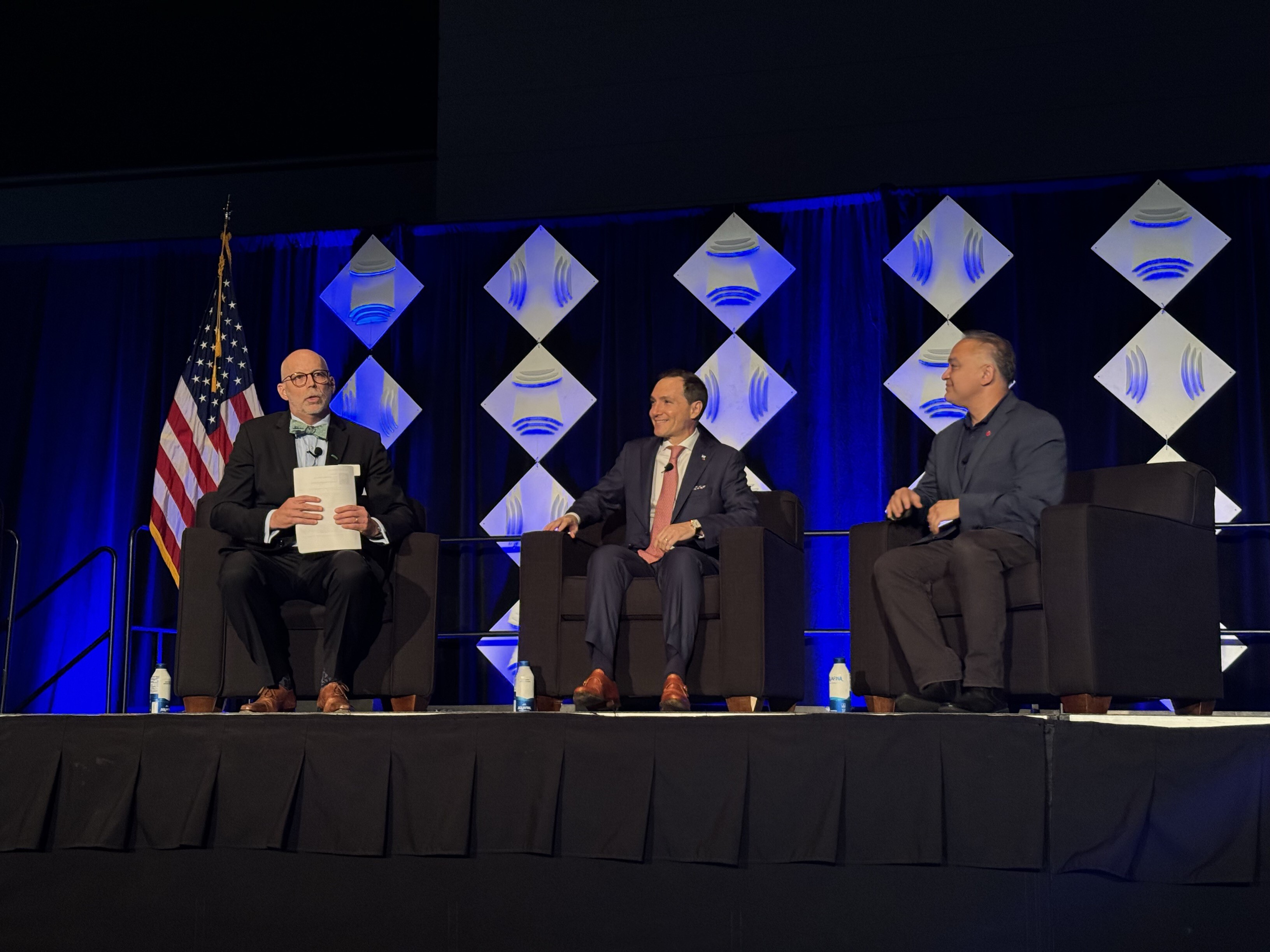Taking Steps Toward Food Supply Chain Sustainability

GFSI’s 2022 theme — Delivering Impact for Safe Sustainable Food — inspired a panel discussion I moderated on how sustainability helps build resilient food supply chains. Panelists from Carrefour, Restaurant Brands International (RBI), and Organic Valley reviewed how their climate, waste reduction, animal welfare, and other sustainability efforts increase supply chain strength.
Panel Discusses Supply Chain Sustainability Initiatives
Some of the great moments from the panel discussion emphasized how working with key supply chain partners can reduce waste, increase supplier loyalty, and mitigate food quality and consumer safety concerns:
- Carrefour – Food Waste & Climate: Bertrand Swiderski, Carrefour’s Sustainability Director, discussed how to increase banana quality and reduce food waste by cushioning bananas. Food waste reduction combats climate change by reducing emissions from decomposition.
- Organic Valley (OV) – Climate & Renewable Energy: Nicole Rakobitsch, Sustainability Director for Organic Valley, addressed how they negotiated the lowest interest rate in the country on loans for renewable energy installations at dairy farms. Their community solar partnership installed 32 megawatts of solar panels at 10 locations to reach a goal of 100% renewable energy in OV farmer communities, providing energy to 23,000 people while reducing costs.
- RBI – Animal Welfare: RBI made fantastic strides by improving animal welfare throughout their supply chain. This included benchmarking and strengthening their animal welfare policies. Eduardo Martinez, Sr. Director of Quality Assurance International, spoke about working with experts to focus on the areas of greatest need. This approach boosted return on investment (ROI) and helped supply chain partners to close compliance gaps.
These were fantastic examples of (1) unique initiatives and (2) ongoing monitoring of sustainability key performance indicators (KPIs) in the supply chain. Both types of efforts (discrete and ongoing tracking) can be considered as parts of sustainable supply chain assurance programs. Given NSF’s experience in providing assistance with supply chain assurance strategies and assurance monitoring, we put together some tips (below, and in this detailed paper) on how to bring these efforts to life in your organization.
Tips for Building a Sustainable Supply Chain Program
The panel discussed how any company in the food supply chain can facilitate beneficial efforts by using a sustainable supply chain assurance program. These programs maximize a company’s positive social and environmental impacts by developing a collaborative partnership with key supply chain partners. In particular, they fast-track innovative joint supply chain sustainability efforts. They also can be used to engage suppliers in the tracking and monitoring of sustainability KPIs for a company’s products and ingredients.
To implement a program, the first question is “How do we get the ball rolling at our company?” This critical step requires a “champion” at the functional and executive level to incorporate sustainability efforts with supply chain partners. Once an initial – even exploratory – commitment has been made in your organization, consider the following steps:
- Create a Vision: Create a vision within your company for engagement in your program and the goals it will support. These goals may include initiatives or may support the collection and analysis of supply chain sustainability KPIs. These can include any spectrum of KPIs based on your industry and company needs. We’ve seen everything from forest management practices to animal welfare and antibiotics policies monitored through these programs.
- Generate Internal Support and Champions: As you build your vision, enhance it with the input of your colleagues. This will help build internal support at various levels and functions, including strong backing by at least one member of the C-suite.
- Develop Goals and an Action Plan: Develop your food supply chain sustainability program by designing a workable program that establishes clear goals and maps out key supply chain risks. Develop standards or policies that codify the types of sustainability KPIs or practices you are seeking to implement throughout your supply chain. Ensure that any necessary forms are created, and consider pilot programs to work out the kinks.
- Cultivate Supply Chain Champions: Engage suppliers by identifying champions among them who can carry the torch and partner with you to achieve sustainability goals. These may be the companies that work with you to pilot some of your new initiatives.
- Ongoing Monitoring and Improvements: Engage in training and self-assessments to establish baseline performance levels that can be used to take corrective action in the key risk areas of the supply chain. Eventually, external audits may be included as a way to strengthen the program and provide a strong feedback mechanism that keeps the program on a path toward continuous improvement.
These are the broad steps, but there is so much more under the surface! Please do check out our paper for more information on sustainable supply chain assurance programs and our first post about the Key Considerations for Food Supply Chain Sustainability.
This text was first published on GFSI Blog.
Ready To Begin the Process?
Contact us with questions or to receive a quote.
How NSF Can Help You
Get in touch to find out how we can help you and your business thrive.

What’s New with NSF

NSF Shanghai Named Critical Site for NSF/ANSI 455 and NSF/ANSI 173 by ANSI National Accreditation Board
July 26, 2024
NSF Takes Center Stage at NEHA Annual Education Conference
July 25, 2024
NSF Asia Pacific Showcases Hospitality Solutions at THAIFEX HOREC Asia 2024 in Bangkok, Thailand
July 4, 2024